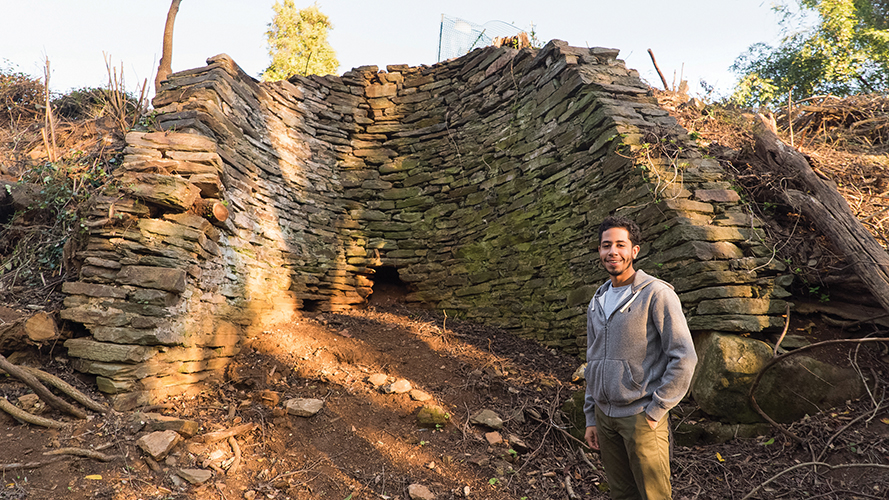Back behind the former psychiatry annex, where the Maryland Horse Breeders Association currently has its offices, just a few yards off Loop Road, an old stone structure is emerging from the clay.
It doesn’t look like much now—a tall stone wall, curved in a semicircle, with another complete circle buried in the hillside behind it—but at one time it was an economic engine for the farm that occupied what would become Goucher’s campus.
The kiln was used to heat limestone, turning it into quicklime for use as fertilizer and mortar. It was worked by enslaved people on the Ridgely farm, and white and freed black workers later.
David Hernandez ’18 is one of two students—the other is Sarah Shepherd ’18—digging it out, as part of a historic preservation class with Assistant Professor of History and Historic Preservation Tina Sheller ’74.
Hernandez has been researching the farm, owned by the Ridgely family, through receipts and documents kept in the college archives. This year, though, with Shepherd and Sheller, that research has moved off the page and into the woods.
“When you take a history class,” he says, leading the way down a muddy path to a clearing, “you’re only hearing about stuff other people have studied and analyzed. Here, you just walk off Loop Road into history.”
After a group effort, and with the help of the college’s Facilities Management Services and Tom Kelliher, associate professor of mathematics and computer science (and avid outdoorsman), a path was cleared to the site, and they’ve begun excavating the area in front of the kiln, which has been filled in in the intervening years. Hernandez knows he won’t see the end of the project before his graduation, but he’s excited to see what future students discover.
“It wasn’t an educational tool before,” he says. “After I graduate, this will still be a project students can use.”
